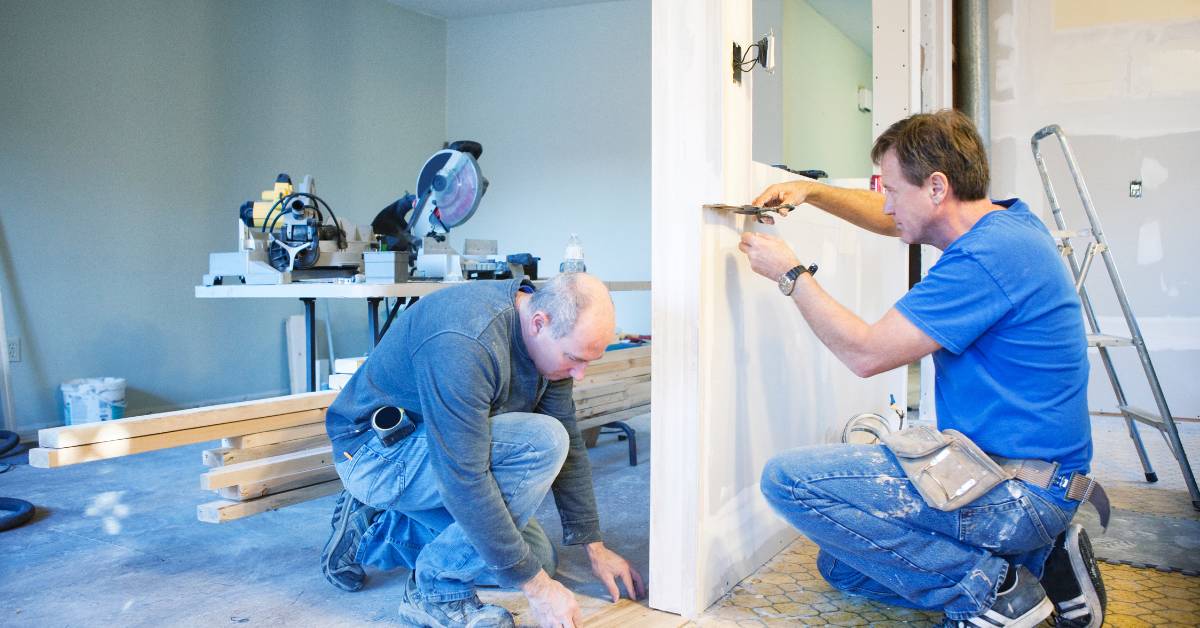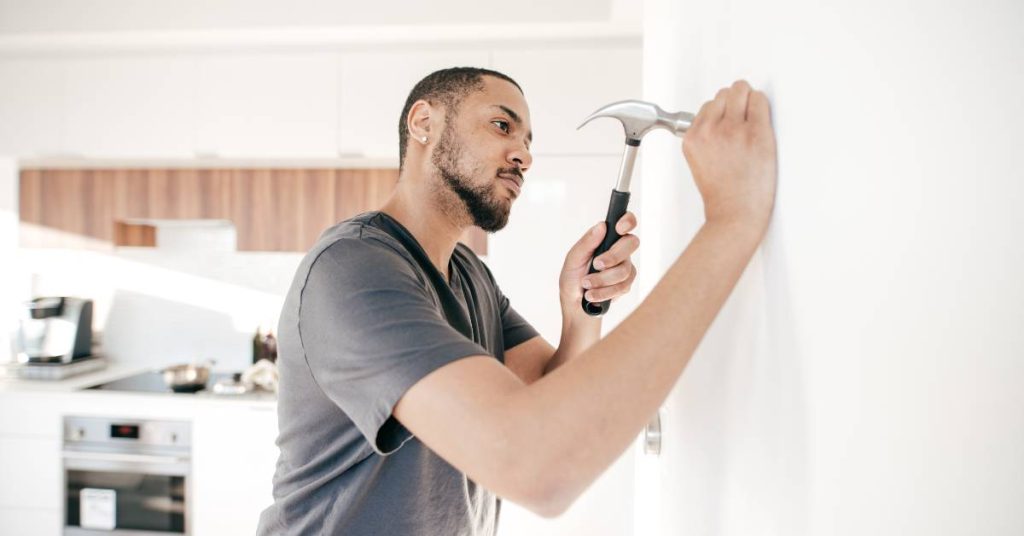If you’ve been dreaming of revitalizing a charming rural property, you’re in for a treat.
As you venture forth into the world of USDA loans, you’ll discover a land of opportunity—a place where fixer-uppers transform into enchanting abodes, and houses become homes infused with love and care.
But before you embark on this exciting journey, there are a few important things to know. USDA loans, specifically designed for properties in rural areas, come with their own set of repair requirements; from health and safety standards to property eligibility.
So, grab your toolbox and put on your thinking cap. In this comprehensive guide, we’ll explore the ins and outs of USDA loan repair requirements, providing you with the knowledge and inspiration you need to make your rural retreat a reality.
What Repairs or Renovations May Be Required to Qualify for a USDA Loan?
Great news! The United States Department of Agriculture (USDA) offers a unique opportunity for low-income families and individuals to purchase and revamp USDA-owned homes in rural areas.
Through the USDA Rural Housing Renovation Loan Program, these older homes—often in need of some TLC—become your canvas for creative expression and the chance to turn a house into your dream home.
But hold your hammers for a moment! Many USDA properties must undergo repairs as a condition of financing. So, before you apply for a USDA loan, there are a few essentials you need to know.
The USDA Escrow Holdback Program is a nifty provision that consolidates financing and repair costs into a single loan, making it a breeze to handle all the financial details at once. Fewer fees, less hassle, and more time to focus on your renovation.
So, what’s on the home improvement menu? Let’s unroll the blueprint:
- New flooring to replace those drab and dated tiles
- Plumbing repairs for a drip-free domicile
- HVAC upgrades for cozy winters and chill summers
- Roof replacement or repair to keep you dry and snug
- Removal of lead-based paint for a safer sanctuary
- Fixes for structural or foundational woes
- Electrical repairs to brighten every room
- New exterior doors to welcome you home
- Repairs for flood-prone basements to keep things high and dry
Comply With USDA Loan Requirements After the Purchase of a Home

After you’ve crossed the threshold into your newly renovated rural haven, it’s time to celebrate! But don’t forget, homeownership is an ongoing adventure. Your home may be in shipshape now, but keeping it that way requires diligence and care.
It’s essential to stay on top of maintenance tasks and address any repair needs that arise. After all, your humble abode is more than just a structure—it’s the heart of your family’s life.
And while your creative instincts may be itching for more home projects, it’s worth noting that the USDA home improvement loan requires the house to be habitable, with the homeowner residing in it. Some conditions disqualify a home from USDA funding, such as missing plumbing, a roof in disrepair, or safety and health hazards.
So, as you make plans for future upgrades or changes, be mindful of maintaining your home’s habitability and compliance with USDA requirements.
Any Restrictions on the Type of Repairs or Renovations That Can Be Made with a USDA Loan?
Typically, the home requires non-structural repairs, though some structural repairs are permitted. Keep in mind that the estimated cost of renovation cannot exceed 10% of the loan amount, and renovations must be completed within 180 days of closing.
While you’re free to let your creativity soar, there are a few projects that may ground your renovation dreams:
- A house without functional plumbing, carpet, or heating
- A roof that’s gone rogue and lost its way
- Hazards that threaten safety and health
Also, while the allure of the avant-garde is tempting, try to steer clear of conditions that might render your home uninhabitable. Sometimes, less is more when it comes to preserving your home’s integrity.
To summarize, here’s the USDA loan repair requirements checklist:
| Area | Repair Required |
|---|---|
| Electrical | Repair or replacement of electrical systems that are outdated, damaged, or not up to code |
| Plumbing | Repair or replacement of plumbing systems that are outdated, damaged, or not up to code |
| Heating and Cooling | Repair or replacement of HVAC systems that are outdated, damaged, or not up to code |
| Roofing | Repair or replacement of roofs that are damaged or leaking |
| Foundation | Repair of foundation issues, such as cracks or settling |
| Mold and Mildew | Remediation of mold and mildew |
| Lead-Based Paint | Remediation of lead-based paint hazards |
| Accessibility | Installation or repair of accessibility features, such as ramps or handrails |
| Pest Control | Remediation of pest infestations |
Note that there’s also the USDA construction loan that lets you finance the building of a new home through the USDA loan program. If you fancy building from scratch, then it’s your best choice.
Any Special Requirements for Contractors or Inspections?
While the USDA loan program doesn’t specify strict requirements for contractors, it’s a good idea to hire licensed and insured professionals who have experience with USDA renovation projects.
Just as a master chef selects the finest ingredients for a gourmet meal, the success of your home renovation hinges on choosing the right professionals for the job. When it comes to contractors, you’ll want to pick wisely. After all, your home is your castle, and only the most skilled artisans should be entrusted with its transformation.
Do your due diligence by checking references, examining portfolios, and obtaining multiple quotes. Communication is key, so select a contractor who listens to your needs and keeps you informed throughout the process.
As for inspections, they’re an indispensable part of the renovation journey.
USDA home loans, just like FHA loans, require appraisals to ensure the property meets the required standards. From assessing structural soundness to identifying health and safety hazards, inspections provide valuable insights that help you make informed decisions. So don’t skimp on this step—embrace it as your ally in achieving renovation excellence.
The Steps Needed to Take to Ensure My Home Meets USDA Loan Requirements for Repairs and Renovations

Embarking on a home renovation is like setting sail on uncharted waters—exciting, but full of unknowns. And if you’re going to embark on that journey with a USDA loan, you need to understand how the USDA loan program works.
To navigate the USDA loan process with confidence, you’ll want to follow these key steps:
- Pre-qualify with a USDA-approved lender: Chart your course by pre-qualifying with a lender who specializes in USDA loans. This preliminary step helps you determine your eligibility and estimate your borrowing power.
- Apply for pre-approval: With pre-qualification in hand, set sail for pre-approval. Your lender will verify your income and finances, calculate your debt-to-income ratio, and determine the loan amount you’re eligible for. Anchors aweigh!
- Find your USDA-approved home: Enlist the help of a savvy real estate agent with USDA loan expertise. Together, you’ll explore the vast sea of USDA-approved homes, searching for the perfect property to make your own.
- Sign your purchase agreement: Once you’ve found your dream home, it’s time to drop anchor and make an offer. With your lender and agent by your side, you’ll negotiate closing costs and sign the purchase agreement.
- Complete the loan underwriting process: The journey continues as an approving loan underwriter reviews your documentation. Keep in mind that USDA renovation loans use a two-party approval system—both your lender and the USDA must give the green light.
- Close on your loan: The final destination is in sight! At closing, you’ll sign all the paperwork, finalize your USDA rehab loan, and take ownership of your new home. Welcome ashore to the abode of your dreams!
Frequently Asked Questions
Can I use a USDA loan for home renovations or improvements?
Yes, you can use a USDA loan for home renovations or improvements. Specifically, the USDA Rural Housing Renovation Loan Program allows low-income buyers to purchase and renovate USDA-owned homes in rural areas. Through this program, buyers can obtain financing for both the purchase and necessary repairs, making it a convenient option for those seeking to revitalize a property. The loan program also offers refinancing options that help you negotiate your existing loan terms.
What happens if the required repairs are not completed before closing?
If the required repairs are not completed before closing, the USDA loan may not be approved. The USDA has specific property standards that must be met, and properties requiring repairs must undergo necessary renovations as a condition of financing. Failure to complete these repairs in a timely manner may result in delays in closing or denial of the loan altogether.
Can I use a USDA loan to purchase a fixer-upper?
Yes, you can use a USDA loan to purchase a fixer-upper. The USDA Rural Housing Renovation Loan Program is designed to help buyers finance the purchase and necessary repairs of older homes in need of renovation. By consolidating financing and repair costs into a single loan, this program makes it easier for buyers to transform a fixer-upper into a comfortable and safe residence.
Can I make the repairs myself or do I need to hire a professional contractor?
While it is possible to make some repairs yourself, it is generally recommended to hire a professional contractor for major repairs or renovations. The USDA loan program does not specify strict requirements for contractors, but hiring licensed and insured professionals ensures that repairs are completed to a high standard and in accordance with USDA guidelines. This is especially important for structural repairs, electrical work, and plumbing, where expertise and compliance with building codes are essential.
The Future of Your Rural Refuge: What’s Next on Your Renovation Radar?
You’ve navigated the USDA loan process, transformed a fixer-upper into a fabulous dwelling, and created a sanctuary that’s uniquely yours. As you revel in the splendor of your renovated home, you might find yourself pondering new possibilities.
What’s next on your renovation radar? Will you cultivate a bountiful garden, create an outdoor oasis, or add a touch of whimsy to your interiors? Whatever your vision, remember that the journey of home improvement is an ongoing voyage of discovery.
So, as you gaze upon your rural refuge, consider this: What wondrous transformations await your creative touch? How will your home continue to evolve as a reflection of your tastes, values, and dreams? With boundless imagination and the support of USDA programs, the possibilities are endless. Happy renovating!






